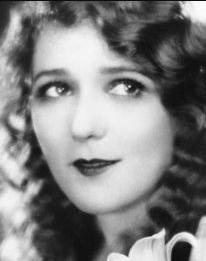Mary Pickford Death
Gladys passed away on May 29, 1979 at the age of 87 in Santa Monica, California. Gladys's cause of death was cerebral hemorrhage.
When did Mary Pickford die?
May 29, 1979How did Mary Pickford die? What was the cause of death?
Cerebral hemorrhageHow old was Mary Pickford when died?
87Where did Mary Pickford die? What was the location of death?
Santa Monica, California
Mary Pickford Birthday and Date of Death
Mary Pickford was born on April 8, 1892 and died on May 29, 1979. Gladys was 87 years old at the time of death.
Birthday: April 8, 1892
Date of Death: May 29, 1979
Age at Death: 87
Is Mary Pickford's father, John Smith, dead or alive?
Mary Pickford's father, John Smith, died on January 25, 1995 as he was 63 years old. His cause of death was cirrhosis.
Is Mary Pickford's mother, Charlotte Hennessy, dead or alive?
Charlotte Hennessy's information is not available now.
Mary Pickford's sister :
Mary Pickford's sister, Lottie Pickford, died on December 9, 1936 as he was 43 years old. His cause of death was heart attack.
Mary Pickford's brother :
Mary Pickford's brother, Jack Pickford, died on January 3, 1933 as he was 36 years old. His cause of death was multiple neuritis.
Mary Pickford - Biography
Mary Pickford was Hollywood's first superstar. As "America's Sweetheart," she was the greatest screen icon of the silent era, virtually defining the role and influence of celebrity within the context of contemporary society. Born Gladys Smith on April 8, 1892, in Toronto, Ontario, she was thrust into show business while still a child following the death of her father, and she toured in a series of road companies under the billing "Baby Gladys." Upon winning a role in Broadway's The Warrens of v*rginia, the 14-year-old was rechristened Mary Pickford by producer David Belasco, and a year later she flirted her way into extra work on D.W. Griffith's 1909 film The Lonely Villa. After earning five dollars for her day of work, Pickford met Griffith's request that she return the following morning with a demand to earn ten dollars daily; the next day she was back on the set, and swiftly emerged as one of the key players in the legendary director's stock company.Pickford soon arranged for an audition for her friend, Lillian Gish, and within months the two young women were among the most popular talents in the burgeoning film industry. Known to the public as "Little Mary" or "the Girl With Golden Hair," she starred in dozens of Biograph Studios films annually under Griffith's supervision, and ultimately left the theater completely behind to focus on movie work. As her stature and fame grew, Pickford began to take increasing control over her career; she often dictated the terms of her productions, and not even the likes of the prestigious Edwin S. Porter could override her decisions on how best to approach her performances. Her popularity extended well beyond North America; early films like 1909's The Little Darling were systematically copied in Russia and distributed throughout the European underground market, and although the loss of income suffered by Biograph was staggering, the piracy of her work made Pickford an international superstar.Pickford's massive popularity made her the motion picture industry's first real icon, and she parlayed her success into more and more lucrative financial rewards. At the insistence of her manager, mother Charlotte, she demanded frequent raises from her employers, and by 1913 she was also the first of the Biograph players to receive almost total creative control. However, believing herself overshadowed by the powerful messages of Griffith's work, in 1916 Pickford signed with Adolph Zukor's Famous Players Company, which in turn charged theaters a premium to screen her movies. Her deal with Zukor was unprecedented: Not only did she sign for an astounding 10,000 dollars a week, but she also netted a 30,000-dollar signing bonus, as well as a significant share of all profits from her films. Pickford honored the deal for less than a year before moving on to an even bigger payday -- a staggering agreement of 350,000 dollars per movie -- and by the age of 24, she was Hollywood's first millionaire.Ultimately, Pickford's fame grew to such unprecedented proportions that no studio in town could hope to afford her salary and accommodate her demands; when Charlie Chaplin, the only other star of a similar magnitude, found himself in the same situation they decided to join forces and form their own studio. United Artists was born in 1919, and also included among its founders swashbuckling actor Douglas Fairbanks, Pickford's husband. Together they were a virtual royal couple, with their lives at the massive Beverly Hills estate Pickfair achieving a kind of fairy-tale quality. At the peak of Pickford's success, however, she began to grow restless. Her standing as "America's Sweetheart" -- a winsome image perpetuated by films like 1914's Tess of the Storm Country, 1917's Rebecca of Sunnybrook Farm, and 1917's Poor Little Rich Girl -- began to straitjacket her creative ambitions, and after 1920's Pollyanna, which cast the 27-year-old as a girl 15 years her junior, she defiantly chopped off her long, angelic curls into a short bob and set about updating her image once and for all.Toward these aims, Pickford lured director Ernst Lubitsch from Germany to the U.S. to helm 1923's Rosita, and out went the Cinderella tales on which her stardom rested. By 1929's Coquette, for which she won an Academy Award, her transformation was complete. However, when 1929's The Taming of the Shrew proved to be a major disaster, Pickford's stardom began to wane, and after only two more films, 1931's Kiki and 1933's Secrets, her career as an actress was finished. After the dissolution of her marriage to Fairbanks in 1935, she and Chaplin bought out their partners, selling United Artists at a significant profit in 1953. Even upon leaving filmmaking, however, Pickford remained a prominent member of the Hollywood community; among her most important endeavors was the formation of the Motion Picture Country Home and Hospital, which aided former film-industry figures left without insurance and retirement benefits in times of dire financial need and illness.Upon retiring from the screen, Pickford bought up many of her early silent films with the aim of having them destroyed upon her death, believing that their artistic value had diminished in the years following their initial release. She later recanted and donated them to the American Film Institute. Still, her work was long out of circulation, and as a result her legacy suffered greatly. Once the biggest star of her era, her movies' relative disappearance from the market made them inaccessible for revival and restoration, and consequently her stature among subsequent generations of movie scholars and fans has been eclipsed by figures of lesser talent and celebrity. In 1955, Pickford wrote her autobiography, Sunshine and Shadow, and two decades later was the recipient of a lifetime achievement Oscar. She died in Santa Monica, CA, on May 28, 1979.








